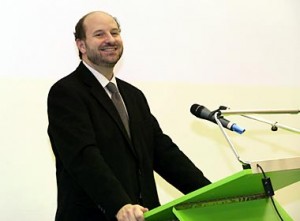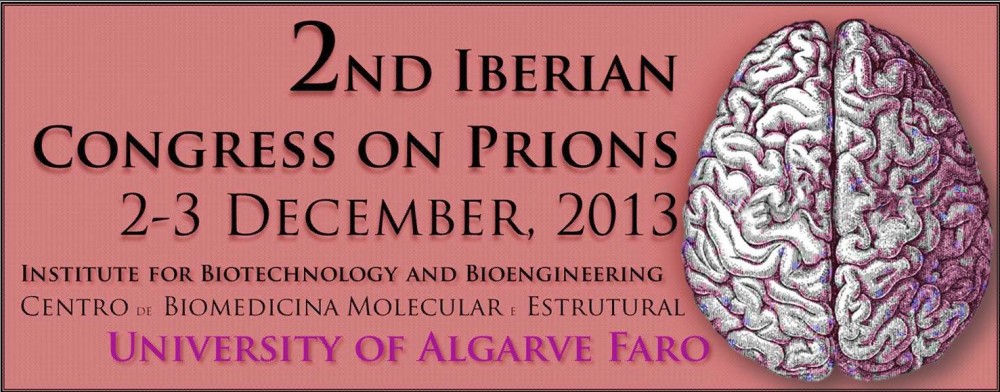 After high school in Italy, I studied Medicine in Freiburg (Germany). Three years into medical school, I took a leave to do a thesis at Columbia Univ. (NY, USA). This work resulted in 5 peer-reviewed publications. During my subsequent specialty training in Neuropathology, I developed models of glioma induction by gene transfer to telencephalic grafts – a technique that I still teach and use in my current lab. In 1989, I joined Erwin Wagner at the Institute of Molecular Pathology (Vienna), where I continued my studies of neurooncogenesis and neurovirology. Results from this research were published, inter alia, in Nature, Science, and Cell. In 1992 I was recruited as PI to the Institute of Neuropathology at the University Hospital of Zurich, and I had the good fortune to meet Charles Weissmann, thence Director of the Institute of Molecular Biology at the University of Zurich. The first result of our collaboration was the demonstration that the Prnp gene is required for prion replication (Büeler, Aguzzi, Sailer, Greiner, Autenried, Aguet and Weissmann Cell 73:1339-47, ’93).
After high school in Italy, I studied Medicine in Freiburg (Germany). Three years into medical school, I took a leave to do a thesis at Columbia Univ. (NY, USA). This work resulted in 5 peer-reviewed publications. During my subsequent specialty training in Neuropathology, I developed models of glioma induction by gene transfer to telencephalic grafts – a technique that I still teach and use in my current lab. In 1989, I joined Erwin Wagner at the Institute of Molecular Pathology (Vienna), where I continued my studies of neurooncogenesis and neurovirology. Results from this research were published, inter alia, in Nature, Science, and Cell. In 1992 I was recruited as PI to the Institute of Neuropathology at the University Hospital of Zurich, and I had the good fortune to meet Charles Weissmann, thence Director of the Institute of Molecular Biology at the University of Zurich. The first result of our collaboration was the demonstration that the Prnp gene is required for prion replication (Büeler, Aguzzi, Sailer, Greiner, Autenried, Aguet and Weissmann Cell 73:1339-47, ’93).
I then showed that PrPC expression is necessary for development of disease using a system that I had invented a few years earlier (Aguzzi, Kleihues, Heckl and Wiestler Oncogene 6:113-118, ’91): neuronal cells from transgenic mice overexpressing the normal prion protein were grafted into the brain of Prnp knockout mice. The manuscript describing these experiments (Brandner, Isenmann, Raeber, Fischer, Sailer, Kobayashi, Marino, Weissmann and Aguzzi Nature 379:339-43, ’96) has garnered >385 citations to date. My interest then shifted to the mechanism by which prions reach the brain. Prions typically enter the body from extracerebral sites, notably in BSE and variant Creutzfeldt-Jakob Disease (CJD). My lab has shown that neuroinvasion (the process by which prions travel through the body and reach the nervous system) relies on expression of PrPC in non-hematopoietic extracerebral cells (Blättler, Brandner, Raeber, Klein, Voigtländer, Weissmann and Aguzzi Nature 389:69-73, ’97). I proposed that neuroinvasion takes place in distinct steps: first the epithelium is trespassed (Heppner, Christ, Klein, Prinz, Fried, Kraehenbuhl and Aguzzi Nat Med 7:976-7, ’01), then the lymphoreticular system is colonized by the agent, and finally infectivity progresses from lymphoreticular organs to the central nervous system (Aguzzi and Weissmann Nature 389:795-798, ’97) via peripheral nerves(Glatzel, Heppner, Albers and Aguzzi Neuron 31:25-34., ’01).
In order to enable therapeutical and prophylactic approaches, progress in the understanding of pathogenesis should go hand-in-hand with the development of diagnostic procedures. With this in mind, my lab has screened plasma proteins that bind the prion protein. We identified plasminogen as the first such protein (Fischer, Roeckl, Parizek, Schwarz and Aguzzi Nature 408:479-83., ’00; Maissen, Roeckl, Glatzel, Goldmann and Aguzzi Lancet 357:2026-8., ’01). We then found that soluble dimeric prion protein binds selectively PrPSc and potently inhibits prion replication, and clarified the molecular mechanism of this therapeutic effect: the modified prion protein attaches to the pathological prions, but cannot be converted into a pathological form itself. Therefore, infectious prions are sequestered in an inactive form and cannot replicate (Meier, Genoud, Prinz, Maissen, Rulicke, Zurbriggen, Raeber and Aguzzi Cell 113:49-60, ’03; Aguzzi and Heikenwalder Nature 423:127-9, ’03). More recently, we have established a completely novel prion strain differentiation procedure based on fluorescence spectroscopy (Sigurdson, Nilsson, Hornemann, Manco, Polymenidou, Schwarz, Leclerc, Hammarstrom, Wuthrich and Aguzzi Nat Methods 4:1023-30, ’07), which may lead to sensitive diagnostics of prion diseases.
We then dissected how prions subvert the immune system to gain access to the brain. We demonstrated that B-lymphocytes are required for the spread of the agent (Klein, Frigg, Flechsig, Raeber, Kalinke, Bluethmann, Bootz, Suter, Zinkernagel and Aguzzi Nature 390:687-90, ’97) irrespectively of the presence of the normal prion protein (Klein, Frigg, Raeber, Flechsig, Hegyi, Zinkernagel, Weissmann and Aguzzi Nat Med 4:1429-33, ’98). With Charles Weissmann, we showed that the mechanism of action of B-lymphocytes consist of presentation of lymphotoxin-ß to follicular dendritic cells (FDCs), and that inhibition of this signal transduction pathway can deplete lymphoreticular organs of prions (Montrasio, Frigg, Glatzel, Klein, Mackay, Aguzzi and Weissmann- 7 – Science 288:1257-9, ’00). This discovery paved the way to post-exposure prophylaxis strategies (Aguzzi and Collinge Lancet 350:1519-20, ’97) exploiting soluble lymphotoxin-ß receptors. We then showed that positioning of FDCs controls the speed of prion neuroinvasion (Prinz, Heikenwalder, Junt, Schwarz, Glatzel, Heppner, Fu, Lipp and Aguzzi Nature 425:957-62, ’03). But what are the mechanisms by which prions target FDCs? We studied these mechanism and showed that prion uptake is mediated by components of the complement system (Klein, Kaeser, Schwarz, Weyd, Xenarios, Zinkernagel, Carroll, Verbeek, Botto, Walport, Molina, Kalinke, Acha-Orbea and Aguzzi Nat Med 7:488-92., ’01). We also found that neutralizing antibodies can protect against prions (Heppner, Musahl, Arrighi, Klein, Rulicke, Oesch, Zinkernagel, Kalinke and Aguzzi Science 294:178-82, ’01) suggesting the feasibility of antiprion vaccinations. My interest in follicular dendritic cells led me to study their pathogenesis, and I discovered that they are derived from ubiquitous perivascular cells (Kraeutler et al., Cell 2012).
My interest now focuses onto what happens after prions reach the brain. My laboratory has therefore developed a conditional microglial paralysis model (Heppner, Greter, Marino, Falsig, Raivich, Hovelmeyer, Waisman, Rulicke, Prinz, Priller, Becher and Aguzzi Nat Med 11:146-52, ’05) which was adapted to long-term organotypic brain slices and has enabled us to identify a potent “priolytic” activity of microglia (Falsig and Aguzzi Nat Protoc 3:555-62, ’08; Falsig, Julius, Margalith, Schwarz, Heppner and Aguzzi Nature Neurosci 11:109-17, ’08). Maybe we can only understand what goes wrong in prion diseases by learning the function of the normal prion protein, PrPC. I have long argued that the toxicity of amino terminally truncated ΔPrPC (Shmerling, Hegyi, Fischer, Blattler, Brandner, Gotz, Rulicke, Flechsig, Cozzio, von Mering, Hangartner, Aguzzi and Weissmann Cell 93:203-14, ’98) offers a window of entry, since it can be competed by full-length PrPC – which implies the existence of a common PrPC receptor (Weissmann and Aguzzi Science 286:914-5, ’99). This area is vigorously pursued at present in my laboratory (Baumann, Tolnay, Brabeck, Pahnke, Kloz, Niemann, Heikenwalder, Rulicke, Burkle and Aguzzi EMBO J 26:538-47, ’07; Behrens, Genoud, Naumann, Rulicke, Janett, Heppner, Ledermann and Aguzzi EMBO J 21:3652-3658, ’02).
My team also monitors prion epidemiology in Switzerland, and has identified a hitherto unexplained rise in CJD incidence in Switzerland (Glatzel, Rogivue, Ghani, Streffer, Amsler and Aguzzi Lancet 360:139-41., ’02). In this context he found surprisingly frequent deposits of PrPSc in spleen and skeletal muscle of sporadic CJD victims (Glatzel, Abela, Maissen and Aguzzi N Engl J Med 349:1812-20, ’03). This finding is significant for public health, and has instructed prion biosafety regulations. Finally, we have reported a crucial link between prion infections and inflammatory diseases (Heikenwalder, Zeller, Seeger, Prinz, Klohn, Schwarz, Ruddle, Weissmann and Aguzzi Science 307:1107-10, ’05; Heikenwalder, Kurrer, Margalith, Kranich, Zeller, Haybaeck, Polymenidou, Matter, Bremer, Jackson, Lindquist, Sigurdson and Aguzzi Immunity 29:998-1008, ’08). Our subsequent discovery that secretory and excretory organs of mice (Seeger, Heikenwalder, Zeller, Kranich, Schwarz, Gaspert, Seifert, Miele and Aguzzi Science 310:324-6, ’05) and sheep (Ligios, Sigurdson, Santucciu, Carcassola, Manco, Basagni, Maestrale, Cancedda, Madau and Aguzzi Nat Med 11:S, ’05) shed prions when inflamed suggests that chronic inflammation is a decisive cofactor for the horizontal spread of scrapie, chronic wasting disease, and other natural prion infections.
2ND IBERIAN CONGRESS ON PRIONS
IBERIAN CONGRESS ON PRION DISEASES PRION STRUCTURE AND BIOLOGY PRION DISEASES AND PRION LIKE DISEASES IN HUMANS PRION DISEASES IN ANIMALS AND VETERINARY SURVEILLANCE
